- Dr. Reinoud de Jonge reports a Worldwide Volcanic Catastrophe 2742 BC. But, sometimes these are really driven by Worldwide Comet Catastrophes, in this case 4741 b2k.
- The transition from the glacial into the Bølling interstadial is dated to 14,692 b2k
-
Bayesian chronological analyses consistent with synchronous age of 12,835–12,735
Cal B.P. for Younger Dryas boundary on four continents
Proceedings of the National Academy of Sciences - June 26, 2015
12,885-12,785 b2k -
Bibliography Of Global Climate - 1991-1993
810 BC Lamb 1977 Global Climatic Boundary 2760 BP = 2809 b2k -
Timeline Of Environmental History - Wikipedia
Start 800 BC: Axial age, a revolution in thinking that we know as Philosophy, begins in China, India, and Europe, with people such as Socrates, Plato, Homer, Lao Tzu, Confucius, among others, alive at this time. This marks the beginning of Classical antiquity.
See more on this period here. - Theoretical resonate interval = 9938 years +/- 11 years
- Measured resonate interval between two swarm A, Cluster 1 (A:CL-1) = 9939 years
- Measured resonate interval between two swarm A, Cluster 2 (A:CL-2) = 9951 years
- Measured resonate interval between two swarm B, Cluster 1 (B:CL-1) = 9942 years
- The average of three measured resonate interval values is 9944 +/- 4.7years
-
Lost City Of Atlantis Discovered? Grainy Images Show City-Like Formations At The
Bottom Of The Caribbean - 17 December 2009
A group of 'undersea archaeologists' have become the latest to claim they have uncovered the lost city of Atlantis.
The scientists - who have refused to identify themselves - have released a series of images taken beneath the Caribbean.
They even told a French newspaper that one of the structures appears to be a pyramid.
They would not reveal the exact location, however, saying only that it was somewhere in the Caribbean Sea. -
A Tale Of Two Sunken Cities - July 24, 2011
Sunken city off the coast of cuba.
They say they still do not understand the exact nature of their discovery, and plan to start a thorough analysis of the site – off the tip of the Guanahacabibes Peninsula
The explorers first spotted the underwater city last year, when scanning equipment started to produce images of symmetrically organized stone structures reminiscent of an urban development.

Figure 4A. Zelitsky's pyramid from submersible view, compared to Bent pyramid of Dashur.
Some of the blocks were built in pyramid shapes, others were circular, researchers said (See Figures 3 A and B).
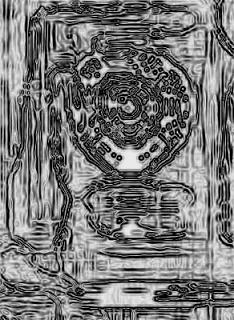
Figure 4B. Some Structures Within The Complex May Be As Long As 400 Metres Wide And As High As 40 Metres.
The structures are on a plateau that forms the bottom of what is thought to be a mud volcano . . . along what is clearly a geological fault line. "It's well known that ancient civilizations liked to build at the base of volcanoes, because the land is fertile.
The site is close to the edge of the underwater geological feature known as the Cuban shelf, which falls off sharply in a series of shelves which drop down to several thousand metres, and it is on one of these shelves, in around 600-700 metres of water, that the structures are to be found. The mass of rectilinear features are said to be located in the proximity of an 'extinct volcano, geological faults and a river bed'. This last fact alone shows that the land shelf, which rises to a height of around 40 metres, was once above water. -
Atlantis Found: Giant Sphinxes, Pyramids In Bermuda Triangle - October 1,
2012
Notice the author who passed away suddenly.
The science team of deep ocean experts, archaeologists and oceanographers found ruins of ancient buildings 600 feet below the ocean. They say the city is Atlantis.

Figure 4C. A Second Giant Pyramid Photographed By The ROV.
Two scientists, Paul Weinzweig and Pauline Zalitzki, working off the coast of Cuba and using a robot submersible, have confirmed that a gigantic city exists at the bottom of the ocean. The site of the ancient city—that includes several sphinxes and at least four giant pyramids plus other structures

Figure 4D. Another Image Of An Atlantean Mega-Structure.
When these anthropologists saw underwater images of this city, and saw some stone monoliths, some symbol, and inscriptions, they identified with Olmec motifs.
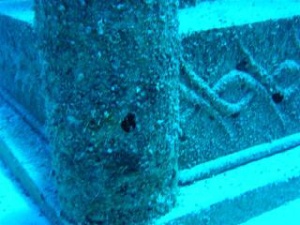
Figure 4E. Symbols And Inscriptions, Identified With Olmec Motif.
The Olmecs devolved from the survivors of Atlantis, a much superior culture destroyed aft the end of the Ice Age flooding. The world was reshaped and a super-civilization destroyed, remembered for millennia only in legend and a passing reference by the philosopher Plato. -
An Update On Atlantis Found In Cuba - 10/8/2012
...the updated videos has been taken down. Hmmm now what is it they do not want us to see -
Week 5 – Atlantis ANP 264 – Great Discoveries in Archaeology? -
2013/07/30
Archaeologists have made discoveries all over the globe that they claim could be the lost city of Atlantis. One of these claims comes from off-shore Cuba. This discovery sits 600 feet underwater in the middle of the Bermuda Triangle. According to scientists, toward the end of the last Ice Age, the sea level was 400 feet lower than it is today. They point out that this could be the reason this lost city is so far submerged, as well as the fact that the land in the Caribbean has been sinking. Apparently, the philosopher Plato had written about the lost city and its destruction correlates with exactly what happened here in Cuba. - Giant Pyramids And Sphinxes Found In The Bermuda Triangle - 22 November 2013 This would have produced an orthogonal pressure forcing subsidence to either East or West. Since the ridge between Cuba and Yucatán is the natural point of weakness between the Gulf subsidence basin and the Caribbean subsidence basin, it naturally subsided deeply. The driver for all this was the hydrostatic changes brought about by both the original crustal shift of 12,900 years ago that I have called the Pleistocene Nonconformity and the slow uplift of the Hudson Bay Basin brought about by the ending of the Ice Age.
-
Giant Pyramids And Sphinxes Found In The Bermuda Triangle - January 5,
2014
The science team of deep ocean experts, archaeologists and oceanographers found ruins of ancient buildings 600 feet below the ocean. They say the city is Atlantis.
Look carefully, in the murky water a giant pyramid is visible
(http://i1260.photobucket.com/albums/ii567/riseearth/Atlantis_01.jpg)
and (http://i1260.photobucket.com/albums/ii567/riseearth/Atlantis_02.jpg) -
The Case for the Younger Dryas Extraterrestrial Impact Event - October 27,
2009
At the base of the black mat at 9 Clovis-age sites in North America and a site in Belgium numerous extraterrestrial impact markers were found including magnetic grains highly enriched in iridium, magnetic microspherules, vesicular carbon spherules enriched in cubic, hexagonal, and n-type nanodiamonds, glass- like carbon containing Fullerenes and nanodiamonds, charcoal, soot, and polycyclic aromatic hydrocarbons. The same impact markers were found mixed throughout the sediments of 15 Carolina Bays, elliptical depressions along the Atlantic coast, whose parallel major axes point towards either the Great Lakes or Hudson Bay. -
Saginaw Impact Structure
Our analysis correlates numerous proposed ejecta structures, including the Carolina bays and the Goldsboro Ridge, to a cometary impact event that struck the Illinoian era ice shield approximately 140,000 years ago. -
Asteroid Catastrophe
Did an asteroid destroy Atlantis?
Col. J. S. Churchward (1931). In support of his sinking continent theory he quoted a source (a totally unverifiable one) which he called the Lhasa Record (presumably a Tibetan writing) which began as follows:
"When the star of Bal fell on the place where now is only the sky and the sea, the seven cities with their golden gates and transparent temples, quivered and shook like the leaves in a storm; and, behold, a flood of fire and smoke arose from the palaces."
Plato, in his Timaeus, mentions the mythic story of Phaethon . . . This myth, according to Plato, actually signifies a "declination of the bodies moving in the heavens around the earth."
Only recently two scientists at Berkeley National Laboratory published a paper detailing evidence of intense neutron bombardment of North America roughly 12,500 years ago. (Firestone & Topping, 2001) It appears that Firestone in particular favors an impact by a comet. Since a crater was not in evidence that far north, they theorized that the comet impacted the earth at a point where the ice pack was roughly two miles thick. The "crater" was imprinted in the ice which subsequently melted, thus the "crater" has vanished.
In an Internet Essay they (Hoyle & Wickramasinghe, 1999) affirm that a large comet could have terminated the Ice Age some 12,000-13,000 years ago, thus leading to the Pleistocene extinction.
Muck pinpoints the area of impact in the North Atlantic Ocean off the Carolina coast, and discusses two large depressions in the basaltic ocean floor which occupy an area of roughly 77,000 square miles. He asks, "What could possibly have caused these two gigantic impact holes."
An American anthropologist, Dr. Alan H. Kelso de Montigny, after studying depth charts showing another massive depression in the eastern Caribbean seafloor, concluded that an asteroid must have struck that area around 10,000 or so years ago. The site is not a great distance from the sea-holes noted by Muck, although this hole is much smaller and shallower than the other two. - There is simply a complete lack of any evidence for such large impacts where Muck claims they happened.
- Geophysical Abstracts 164 January-March 1956 This outlines Kelso de Montigny's theory that the Lesser Antilles were created by the impact of a gigantic meteorite, an asteroid, about 5,000-6,000 years ago. The theory is based on the rimlike shape of the island chain with a craterlike depression within, deepest in the center; the distribution of certain snakes indicating land connections between the islands and South America less than 10,000 years ago; and on Indian folklore. The finding of meteorite remains on the west coats of the Lesser Antilles or in the sea floor in the center would support the theory
- A massive global catastrophe happened about 11,703 years ago. An impact crater in the Caribbean appears to be related to the destroyed 'Atlantis civilization'. Both a sunken city and a massive circular structure (as described by Plato) have been found in the sea off western Cuba.
- A Jovian like object, dubbed Vulcan, appears to be responsible for generating comet/meteor swarms in an astronomical 3:2 resonate orbit. Consequently, a precise astronomical resonate interval exists that can relate the passage of these swarms through the inner solar system where a few are likely to impact Earth.
- The astronomical resonate interval's theoretical value is twice Vulcan's orbital period, or 9938 +/- 11 years if it is at the suspected IRAS point [9944 +/- 55 years if only near this IRAS object]. Its average value from three measured resonate intervals is 9944 +/- 4.7 years.
- The mathematical connection between two widely separated comet impact events have been verified. The recent one (in the third century AD) was determined by highly accurate dendroclimatology (tree ring) data. The second was at the catastrophic end of the Younger Dryas that destroyed the Atlantis civilization. The association of these two events have been related as being from the same comet cluster to within two years or less by the astronomical resonate interval.
- The computed times for both the initiation and termination of the Bølling interstadial and Younger Dryas Ice Age are precisely predicted from recent weather change events observed during 236 to 237 AD, a global climatic boundary in 810 BC and a recorded global volcanic event 2742 BC thought related to an impact driven event.
- This analysis indicates that an 'Ice Age' should not have happened following a massive comet or meteorite Earth impact that happened around 3195 to 3201 BC causing Noah's Great Flood. Only a brief cold period ensued as this astronomical model predicts.
- The militant nature of the Atlantis culture appears to have been condemned by Socrates, an avatar of the Transcendental soul, and a contemporary of Plato.
- The resonate interval is directly obtained from the period of brown dwarf star (Vulcan whose aphelion is 41.6 billion miles) in our solar system. Astronomer Dr. J. Allen Hynek's (U.S. Air Force consultant) predicted a 50 billion mile away Brown Dwarf (Nov. 1982 Science Digest). See: Vulcan Revealed.
- The existence of this Jovian sized object (Vulcan) induced up to 36 natural disasters in human history over the last 15,000 years apparently contradicts NASA's observation that NASA's WISE Survey Finds Thousands of New Stars, But No 'Planet X'. The 'absence of evidence is not evidence of absence', especially when there is 'evidence of presence' in peer reviewed scientific material!
- Is the government aware of this threat?
Outgoing DHS Secretary Janet Napolitano Warns Of 'Serious' Cyber Attack, Unprecedented Natural Disaster - Aug 27, 2013
The outgoing Homeland Security Secretary has a warning for her successor: A massive and "serious" cyber attack on the U.S. homeland is coming, and a natural disaster — the likes of which the nation has never seen — is also likely on its way. You also will have to prepare for the increasing likelihood of more weather-related events of a more severe nature as a result of climate change, and continue to build the capacity to respond to potential disasters in far-flung regions of the country occurring at the same time. - The predicted dates for the next passage of a comet cluster through the inner solar system are 2016 to 2017. The theoretical resonate interval value was used in this estimation. See: 2016, Tollmann's Hypothetical Bolides Return
- Earth is anticipated to be threatened with a Younger Dryas (initiation) like climate change because the B comet swarm is involved. That means a possible return to a new Ice Age for the world leading to a diminished food and fresh water supply.
- There is marginal information suggesting that there are attempts to recover artifacts or even extraterrestrial alien artifacts from Plato's Circular Atlantis Structure.
- Is there a parallel to the impending event and the militant nature of cultures that develop on the North American land mass? The USA, like Atlantis, has been involved in wars around the Mediterranean basin and in the Middle East. Similarly, northern hemisphere impacts are anticipated in North America, the Atlantic and Mediterranean basin in the near future.
BACKGROUND
The Vulcan web site offers a theory that a half Jupiter mass body in the outer solar system draws Kuiper belt objects into the inner solar system. These fragment when going around the Sun and form four or five comet swarms, each of which has within it at least two comet clusters presumably made of much the same material (e,g. stone, iron or ice). Often some of these passing fragments hit Earth. The Carolina bays are one such example of such an impact. However, in this case, the boloid impacted the Laurentide ice sheet and the resulting low speed ice boulders formed the bays.
Impacts from large comets or meteorites are major drivers of Earth's climate and
cause the initiation and termination of cold periods or Ice Ages.
Meteor/Comet Bombardment Affects On
Earth - 7 June 1999
METEOR/COMET IMPACT CONSEQUENCES
Sir Fred Hoyle, Britain's royal astronomer, proposed (1981) that meteors (or comets)
are responsible for both the rapid onset and termination
of Ice Ages as well as the variations of global ice
levels found in the Pleistocene. Normally, the oceans act as a gigantic heat
engine, forming water vapor that moves north and south with the winds. When it
rains or snows, heat is released, warming the mid-latitudes. Stony meteors are
five to ten time more common than metal ones. Strikes more than 300 meters in
size would throw a thousand times their mass into the high atmosphere. Half-
micron size debris could remain aloft for over ten years causing the oceans to
cool, losing their reserves of heat. Fine ice crystals, which naturally form
when temperatures drop below minus 40 deg. C, would no longer be held at bay by
heat rising from the Earth. They would reflect much of the Sun's radiation back
into space causing the Earth to remain suspended in an
Ice Age.
Less frequent Iron meteor strikes form both stony and heat absorbing metallic dust that prevent the fine ice crystals from forming. The Earth would warm signaling the start of an interglacial period. Such a strike would quickly melt ice and define a world - wide catastrophe. It could be responsible for the extinction of 32 genera of megafauna (MF) around 11,600 YA (Years Ago) at the end of the Pleistocene. Consider the major climate changes when Earth appeared to be exiting the Pleistocene Ice Age about 15,000 years ago. Two climatological periods occurred before Earth finally settled into the Holocene, our current warm wet period, the Bølling Allerød oscillation and the Younger Dryas stadial, also referred to as the Big Freeze.
A New Greenland Ice Core Chronology For The Last Glacial Termination
The timescale covers the period 7.9–14.8 kyr before present and includes the Bølling, Allerød, Younger Dryas, and early Holocene periods.
As the GRIP and NGRIP ice cores are not optimal for annual layer counting in the middle and late Holocene, the timescale is tied to a prominent volcanic event inside the 8.2 kyr cold event, recently dated in the DYE-3 ice core to 8236 years before A. D. 2000 (b2k) with a maximum counting error of 47 years.
The new timescale dates the Younger Dryas-Preboreal transition to 11,703 b2k, which is 100–150 years older than according to the present GRIP and NGRIP timescales.
The transition from the glacial into the Bølling interstadial is dated to 14,692 b2k.
Within in a single year, northern Europe went from temperatures similar to those we now experience to glacial conditions (the Younger Dryas). Temperatures at the summit of Greenland plummeted to 15oC less than today. The implication is that this was due to the impact of a large stony meteorite or stony cored comet after smaller leading meteors in the cluster had impacted (just exploding in the atmosphere?) causing minor fluctuating weather changes. Specifically:
The Earth’s Climate Can Flip In A Single Year - August 21, 2008
Particularly striking are the pronounced inter-annual to decadal oscillations before the final shift, which occurred within one year. These short term fluctuations indicate that the change from calm and wet to windy and dry conditions began with a period of individual extreme years with Younger-Dryas like-conditions. However the depositional system in the lake switched back after these extreme years to Allerød-like conditions until the permanent shift at 12,679 varve year BPThe Mysterious Onset Of The Younger Dryas? - 23 March 2011
The precise timing of the abrupt Younger Dryas onset is still uncertain.. . . Changes in ocean and/or atmospheric circulation or solar radiation, and even a comet impact have been proposed as triggers, but the abruptness and severity of YD onset still elude explanation.
In Meerfelder Maar, a German crater lake, the wind strength changed abruptly and permanently during the winter of 12,679 cal BP, marking the local onset of the Younger Dryas (Brauer et al.,2008). This date is based on counted varves that are explicitly tied to the GRIP chronology, which has now been superseded by NGRIP; accordingly, it should be corrected to ca. 12,850 cal BP. or
or ` 12,900 b2k or YA
The end of the Younger Dryas cold period and the beginning of the Bølling interstadial was also equally abrupt. This warm up (that finally creating the Holocene) involved the impact of an iron core comet or meteorite.
Ice Cores Map Dynamics Of Sudden Climate Changes? 19-Jun-2008
In the Northern Hemisphere the last glacial ended in strong variations of temperature, which consisted of two warming periods interrupted by a cold period. The first sudden warming happened 14,700 years ago. The temperature in Greenland increased by more than 10 degrees, and in the milder climate, called the Bølling period, the first people of the Stone Age went towards Northern Europe and Scandinavia. But joy did not last long. 12,900 years ago the ice age stroke once more with a new severely cold period, which lasted until 11,700 years ago, at which time the ice age ended ultimately. The ice cores from Greenland, which reflect the climate in the Northern Hemisphere, show that tremendously fast climatic changes were involved.The Younger Dryas ended as abruptly as it had begun, when temperatures rose 50 degrees F (28 degrees C). Glaciers retreated to Antarctica, Greenland, and the North Pole, and rainfall again became abundant. Forests returned to Scandinavia, Germany, and North America. The return of warmth and rainfall, along with the invention of agriculture, allowed humans to settle in communities. The end of the Younger Dryas initiated the modern climate.
The ice age ended in one year
"We have analysed the transition from the last glacial till our present warm interglacial period, and the climatic shifts are happening so suddenly as if somebody had pushed a button", says Dorthe Dahl-Jensen, Professor at the Centre for Ice and Climate at the Niels Bohr Institute of the University of Copenhagen.
The new data from the ice cores show that the climate shifted from one year to the next. The annual layers of the ice have been analysed in a very high resolution for a number of components that in their own way tell us about the climate.
Dust. The amount of dust has been measured. The colder the climate is, the more dust is available in the atmosphere of the Earth, and the more dust is blowing over the land settling on the ice cap.
VULCAN GENERATED COMET SWARMS
The Vulcan and Comets theory asserts that there is a nominal half Jupiter sized planet or brown dwarf star in the outer solar system (dubbed Vulcan by theosopher Madam Blavatsky) with a nominal 4969 year orbit and it draws Kuiper belt objects into the inner solar system from time to time. Our current epoch (the Pleistocene and Holocene) is one of those times. These objects fragment going around the Sun forming comet swarms. Figure 1 shows how these Vulcan related comet swarms move around the Sun.
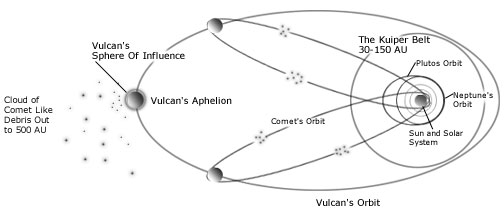
Figure 1. Vulcan Related Meteor Or Comet Swarms In A 3:2 Resonate Solar Orbit.
Five comet swarms have formed at two distant (444 AU) locations in Vulcan's elliptical orbit separated by 13o. The swarms are formed in a 3:2 resonance orbits during two sequential Vulcan orbital revolutions. The 3:2 resonate orbit means that the comets orbit the Sun three times every time Vulcan orbits it twice. These swarms are labeled A' & A and B' & B respectively. A rogue swarm C is also present. Their periods (~3313 years) are about two thirds that of Vulcan's, but vary slightly due to Vulcan's distant presence. The celestial geometry modifying the periods of the distant comet swarms is the same every ~9938 years (two Vulcan's ~4969 year periods). These comets are similar to the red Plutinos found in a 3:2 resonance orbit with Neptune.
The separation of the A' to A and B to B swarms is found to be about 600 - 1000 years. There should theoretically be two clusters with each swarm, one turning around before Vulcan and one afterwards. These clusters are labeled Cl-1 and Cl-2. The meteors or comets in- between are ejected by or collide with Vulcan. However, some of the swarms, especially the B swarm, form even more clusters. When a comet cluster passes through the inner solar system, usually Earth gets hit by something, big or small. This changes the weather or can even cause the collapse of civilizations. Tree ring or ice core data reveals these events, and recorded history sometimes verifies them. Volcanic activity is often produced from these impacts and it can also modify the weather. This dust is injected into the low atmosphere where rain tends to quickly eliminate it. The comet activity usually is usually lead and trailed by accompanying meteors. When striking Earth, they produce fireballs that inject dust into the high atmosphere producing minor climate changes. Should there be an major impact, massive amounts of dust is injected into the atmosphere. Metal dust (from an iron meteorite) can minimize these effects on the climate. Otherwise, Earth remains locked in an Ice Age.
An impact from a comet in the Swarm B Cluster 1 group a (B:Cl-1a) appears to have initiated the Younger Dryas period and one from the Swarm A Cluster 1 group (A:Cl-1) is thought to have terminated it. The B:Cl-1 cluster (and probably the entire swarm and group) are thought to be stony core objects. An impact from the A:Cl-1 cluster is also believed to be responsible for Noah's Great Flood that occurred between 3195 and 3201 BC. These are thought to be iron core comets. Tree Ring data clearly shows the presence of an initial cold period from this strike 3195 BC. However, it did not last. The impact that cause Noah's Flood created a massive tsunami that carried the Ark up 7,000 feet. Consequently, impacts from the A:Cl-1 cluster are thought to be iron core comets or meteorites, just like those that ended the Younger Dryas. The extended cold period was stopped by metal dust injected into the atmosphere.
Vulcan's orbital period is the key to determining what comet cluster is impacting Earth at what particular time. Vulcan's period can be theoretically deduced using Madam Blavatsky's theosophy.
Vulcan’s theoretical period can be obtained from Blavatsky’s Theosophy combined with data from the IRAS (Astronomical Infrared Survey Satellite). There are two conditions:
1) If Vulcan is at the suspected IRAS
point (i.e. IRAS 1732+239), then:
Vulcan’s Theoretical Period = 4969.0 years +/- 5.7 (one sigma) years.
2) [If Vulcan is nearby the IRAS point] (e.g. a typo was made recording the data
for IRAS point),
then:
[Vulcan’s Theoretical Period = 4972.0 years +/- 27.35 (one sigma) years.]
It is statistically certain that the Combined Measured Period is within 90% of Vulcan’s theoretical period if Vulcan is at the IRAS point employed, and 87% if it is not. Any probability > 40% means that the two physical quantities are related.
Two orbital revolutions of Vulcan is 9938 +/- 11 years [9944 +/- 55 years]. The interval between the passage of the same comet swarm/clusters can only be precisely predicted when the resonate interval (2 Vulcan revolutions or 3 comet swarm/cluster revolutions) is used. The time interval between comet induced climate changes can only be accurately estimated when there is a resonate interval between them. This is because the relative location of Vulcan slightly alters the nominal period (~3313 yeas) between the same sequential comet swarm/clusters (by a few hundred years) when they are far from the Sun. Vulcan is at the same relative location when a resonate interval separates the passage of the same comet swarm/cluster through the inner solar system.
ATLANTIS: PLATO'S ACCOUNT
Atlantis from Wikipedia
The Timaeus begins with an introduction, followed by an account of the creations
and structure of the universe and ancient civilizations. In the introduction,
Socrates muses about the perfect society, described in Plato's Republic
(c. 380 BC). Critias mentions an allegedly historical tale that would make the
perfect example, and follows by describing Atlantis as is recorded in the
Critias. In his account, ancient Athens seems to represent the "perfect
society" and Atlantis its opponent, representing the very antithesis of the
"perfect" traits described in the Republic.
Timaeus:
For it is related in our records how once upon a time your State stayed the course of a mighty host, which, starting from a distant point in the Atlantic ocean, was insolently advancing to attack the whole of Europe, and Asia to boot. For the ocean there was at that time navigable; for in front of the mouth which you Greeks call, as you say, 'the pillars of Heracles,' there lay an island which was larger than Libya and Asia together; and it was possible for the travelers of that time to cross from it to the other islands, and from the islands to the whole of the continent over against them which encompasses that veritable ocean. For all that we have here, lying within the mouth of which we speak, is evidently a haven having a narrow entrance; but that yonder is a real ocean, and the land surrounding it may most rightly be called, in the fullest and truest sense, a continent. Now in this island of Atlantis there existed a confederation of kings, of great and marvelous power, which held sway over all the islan, and over many other islands also and parts of the continent.Another passage from Proclus' commentary on the Timaeus gives a description of the geography of Atlantis:
That an island of such nature and size once existed is evident from what is said by certain authors who investigated the things around the outer sea. For according to them, there were seven islands in that sea in their time, sacred to Persephone, and also three others of enormous size, one of which was sacred to Hades, another to Ammon, and another one between them to Poseidon, the extent of which was a thousand stadia [200 km]; and the inhabitants of it - they add - preserved the remembrance from their ancestors of the immeasurably large island of Atlantis which had really existed there and which for many ages had reigned over all islands in the Atlantic sea and which itself had like-wise been sacred to Poseidon. Now these things Marcellus has written in his Aethiopica".Critias:
According to Critias, the Hellenic gods of old divided the land so that each god might own a lot; Poseidon was appropriately, and to his liking, bequeathed the island of Atlantis. The island was larger than Ancient Libya and Asia Minor combined, but it afterwards was sunk by an earthquake and became an impassable mud shoal, inhibiting travel to any part of the ocean. The Egyptians, Plato asserted, described Atlantis as an island comprising mostly mountains in the northern portions and along the shore, and encompassing a great plain of an oblong shape in the south "extending in one direction three thousand stadia [about 555 km; 345 mi], but across the center inland it was two thousand stadia [about 370 km; 230 mi]." Fifty stadia [9 km; 6 mi] from the coast was a mountain that was low on all sides ... broke it off all round about ... the central island itself was five stades in diameter [about 0.92 km; 0.57 mi].Madame Blavatsky and the TheosophistsPoseidon carved the mountain where his love dwelt into a palace and enclosed it with three circular moats of increasing width, varying from one to three stadia and separated by rings of land proportional in size. The Atlanteans then built bridges northward from the mountain, making a route to the rest of the island. They dug a great canal to the sea, and alongside the bridges carved tunnels into the rings of rock so that ships could pass into the city around the mountain; they carved docks from the rock walls of the moats. Every passage to the city was guarded by gates and towers, and a wall surrounded each of the city's rings. The walls were constructed of red, white and black rock quarried from the moats, and were covered with brass, tin and the precious metal orichalcum, respectively.
According to Critias, 9,000 years before his lifetime a war took place between those outside the Pillars of Hercules at the Strait of Gibraltar and those who dwelt within them. The Atlanteans had conquered the parts of Libya within the Pillars of Hercules as far as Egypt and the European continent as far as Tyrrhenia, and subjected its people to slavery.
But at a later time there occurred portentous earthquakes and floods, and one grievous day and night befell them, when the whole body of your warriors was swallowed up by the earth, and the island of Atlantis in like manner was swallowed up by the sea and vanished; wherefore also the ocean at that spot has now become impassable and unsearchable, being blocked up by the shoal mud which the island created as it settled down.
Blavatsky took up Donnelly's interpretations when she wrote The Secret Doctrine (1888), which she claimed was originally dictated in Atlantis itself. She maintained that the Atlanteans were cultural heroes (contrary to Plato, who describes them mainly as a military threat).Blavatsky had also been inspired by the work of the 18th-century astronomer Jean-Sylvain Bailly, who had "Orientalized" the Atlantis myth in his mythical continent of Hyperborea, a reference to Greek myths featuring a Northern European region of the same name, home to a giant, godlike race.
The Greek-Atlantean War. The militant nature of the Atlantis culture appears to have been condemned by Socrates, an avatar of the Transcendental soul, and a contemporary of Plato.
The Atlantean invasion caught the Greek people by surprise. New Atlantis had seized several Greek Colonies along the Iberian peninsula
The Treaty forced Greece to give up several colonies in the Mediterranean sea.
By the end of the war, Greece no longer saw any faith with the gods and destroyed most of the temples.
The end of the was set the stage for a cold war, between the Atlantean Federation and the Greek Empire.
Q. Did Plato say that Atlantis sank to the bottom of the Atlantic Ocean in one day and night?A. No he didn't. Let's look at the text of Plato's Timaeus where he appears to say this: "But afterwards there occurred violent earthquakes and floods; and in a single day and night of misfortune all your warlike men in a body sank into the earth, and the island of Atlantis in like manner disappeared in the depths of the sea." Since the Egyptian priest was speaking to an Athenian (Solon), "your warlike men" refers to the Athenian army, which was fighting on the mainland of Europe—possibly in Greece itself. In other words, Plato is saying that not only did portions of Europe suffer an inundation, drowning the Athenian army in a single day; but during the same catastrophe Atlantis was likewise inundated! Read it carefully. If this convulsion of nature resulted in a catastrophic flood (and/or subsidence) in Europe over a thousand miles from Atlantis, then this cataclysm was no local affair. Apollodorus says: "Poseidon was very wrathful, and flooded the Thraisian plain, and submerged Attica under sea-water." (Bibliotheca, III, 14, 1.) One of the Books of Thoth describes a pyramid as standing on the sea-shore, "the waves of which dashed in powerless fury against its base." This is a strong indication that the geographical situation of Egypt has also changed drastically, involving either sea-level rising or land subsidence at some point. There is abundant geological and paleontological evidence supporting our opinion that this catastrophe - ending the ice age and resulting in the Pleistocene extinction - was no mere local disturbance, but was most probably global in nature.
Q. But doesn't Plato's statement imply that Atlantis sank to the bottom in a day and night?
A. If you read Plato carefully it will be clear that Atlantis sank just below sea level during the cataclysm. Plato says merely that it "disappeared beneath the sea." Even though the Atlantean civilization was destroyed in the horrendous catastrophe, after the geological event was over the land itself ended up just barely covered by the sea. This left the sea outside the Pillars unnavigable because it was extremely shallow. In Plato's own words: "For which reason the sea in those parts is impassable and impenetrable, because there is a shoal of mud in the way; and this was caused by the subsidence of the island." We have the statements of several Phoenician and Carthaginian sailors which say the Atlantic was extremely shallow and difficult to navigate because of this. Such stories may have been kept alive long after the fact for political and economic reasons, but these conditions could well have been accurate for an extended period after the disappearance of Atlantis. At least Plato said this was so. Geologists take note: Atlantis has had 12,000 years to settle a distance of approximately two miles to the present position of the ocean bottom.
Since Atlantis was an island empire located some distance from the mainland, it would have to be assumed that they had ships and the associated knowledge of sailing in order for them to attack the mainland successfully. Plato uses such terms as "triremes" (a triple-decked, oar-driven warship) because that's the technology he was familiar with. It has recently been learned that ice age man throughout the world had boats and ships capable of taking him just about anywhere he wanted to go (Thorndike, 1977). This comes as somewhat of a surprise to some anthropologists.
A Personal Comment
As noted above, Atlantis was overwhelmed by floods and earthquakes during the ending of the last ice age, when massive glaciers were melting and as a result sea levels were rising. The earth's crust was also flexing in an attempt to adjust to the massive decrease in the weight of the ice (much of the ice cap was 2 to 3 miles thick). Such geophysical activity could easily trigger violent earthquakes, subsidence, and massive floods.
PLATO, TREE RINGS AND ICE CORES
From Plato's Atlantis; he revealed that Atlantis sank circa 9,700 B.C.
From Dr. Steffensen; the last glacial period. It ended precisely 11,711 years ago (from Dec. 2008) or 9704 years BC. His uncertainly is +/- 20 years
From Dr. Mike Baillie who analyzes tree rings in
order to deduce past weather changes (dendroclimatology). Such
an event occurred in the 3rd century AD:
"I used the 236-237 AD information in a grant report (rather than a
publication)."
Dr. Baillie's data is 1763 - 1764 b2k and adding the resonate interval of 9938 [9944] years to his values yields another exact time Earth had been threatened by this comet cluster one resonate interval ago, or 11,701 [11707] to 11,702 [11708] b2k. The [bracketed] values are for the case if Vulcan is only near the suspected IRAS point. Thus, Dr. Baillie's results indicate that a weather change event could be anticipated 9702 [9708] to 9703 [9709] BC. The uncertainty is dominated by uncertainties in the resonate interval (two of Vulcan's orbital periods), +/- 11 [55] years.
THE RESONATE INTERVAL updated 29 July 2015
Theoretically, a comet swarm is formed from when Vulcan draws a single Kuiper belt object into an orbit that carries it near the Sun. The gravitational stresses placed on the object rounding the Sun causes it to break up into many pieces that become organized into clusters and groups. Pieces from the same swarm impacting Earth have somewhat the same affect. The A swarm seems to be more metal like objects and the B swarm more stony like. The resonate interval defines when the same comets/meteors are passing through the inner solar system and likely interacting with Earth. Three direct measurements of this resonate interval can be found.
A. The resonate interval between two A:Cl-1 cluster weather change events is simply the difference between Dr. Steffensen's 11,703 b2k ending of the Younger Dryas period and Dr. Baillie's 1764 b2k climate change event which is 9939 years.
B. The resonate interval can be found between two A:Cl-2 cluster weather change events.
C. The resonate interval can also be found between two B:Cl-1 weather change events. The one initiating the Younger Dryas cold period is very well known, 12,885 b2k. However, the B:Cl-1 cluster is spread out and has five groups; (B:C1-1a) 39yr (B:C1-1b) 29 yr (B:C1-1c) 66 yr (B:C1-1d) 15 yr (B:C1-1e). Apparently, comet from the B:C1-1a group hit Earth initiating the Younger Dryas at 12,885 b2k. Other comets from the following groups may have also hit Earth shortly thereafter, but this first one was the one that initiated the Younger Dryas. Similarly, the next to the last from this cluster from group B:C1-1d hit again at about 2809 b2k.
Thus the resonate interval for the B:C1-1 cluster is 12,751 b2k - 2809 b2k = 9942 years.
Summarizing, the theoretical and directly measured resonate interval (that mathematically relates the exact time between impacts from the same comet swarm/cluster) is:
Note that this is pushing the ice core data about as hard as possible because it has large errors associated with it. Note also that sequential impacts from the same comet swarm/cluster cannot be as precisely determined as Vulcan is at different angular locations during different sequential periods and this alters the sequential period of the comet swarms. One resonate interval is the time between three sequential revolutions of the same comet cluster about the Sun and the gravitational effects of Vulcan's mass on the comet swarms averages out to the same value during each resonate interval.
ATLANTIS FOUND
The Search For Atlantis In Cuba - Cayce's Psychic Quest
In 1926 Edgar Cayce, America's most famous psychic, agreed to use his psychic talents to find buried treasure on the twin-islands of Bimini, the self-styled 'gateway to the Bahamas'.Atlantis has been found off the western side of Cuba and some of it is only 600 feet under water. There has been a 400 foot rise of the sea water during the Holocene (the current warm period) since the end of the Younger Dryas cold period and the Atlantis event.
However, both during the psychic investigations and afterwards Cayce now began to refer to Bimini as a surviving fragment of a great landmass called Poseidia, itself a surviving portion of a great continent called Atlantis.
This led to a concentration of effort by the Association of Research and Enlightenment (ARE), the active arm of the Edgar Cayce Foundation, to find evidence of Atlantis in the shallow waters around Bimini, and in the summer of 1968 this culminated in the discovery of rectangular foundations (the so-called 'temple site') in the metre-deep waters off Andros, the largest island in the Bahamas, as well as the so-called Bimini Road site, located off Paradise Point, North Island.
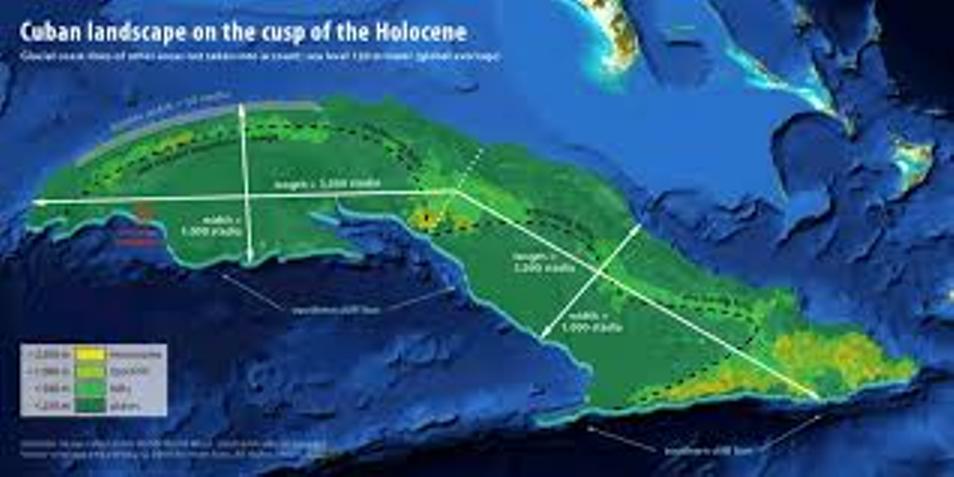
Figure 2A. This Is How Cuba Would Appear Near The Start Of The Holocene.
The blue dot in Figure 2B pinpoints the location of a sunken circular structure in the south of an oblong plain just as Plato described. Proclus' commentary on the Timaeus specifically describes seven islands and "three others of enormous size". These islands were present during the time of the Younger Dryas Ice Age when the oceans were 400 feet lower than now. These enormous islands are thought to be Cuba, the combined Bahamas Commonwealth of 700 + Islands including Bimini (then appearing as one island) and Hispaniola (not shown in Figure 2B). Puerto Rica and Jamaica (along with other islands exposed by the lower ocean levels) are thought to be members of the other seven islands mentioned.
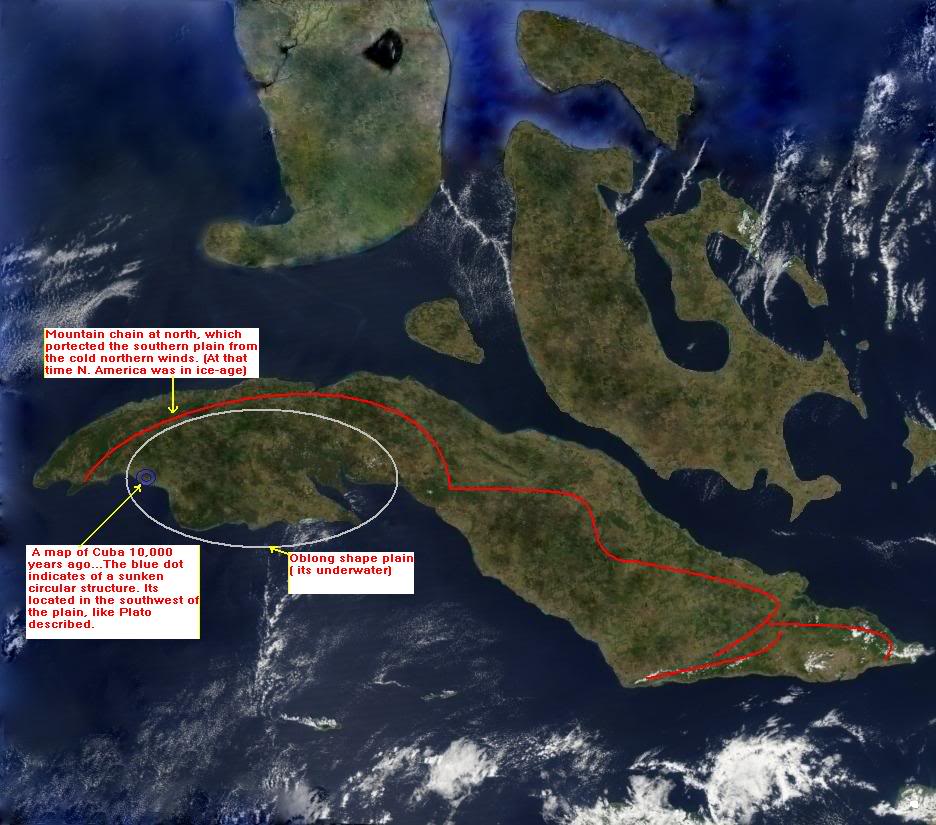
Figure 2B. Location Of Plato's Sunken Circular Structure
Plato's Circular Structure as seen from space.
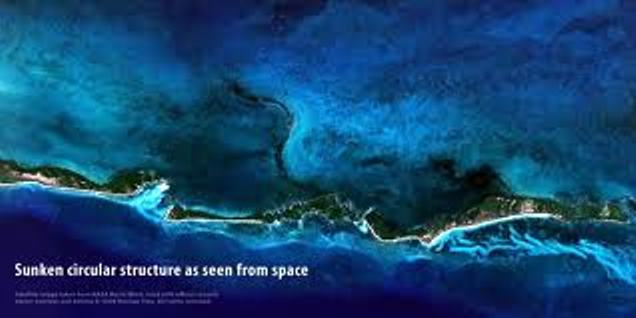
Figure 2C. The Sunken Circular Structure As Seen From Space.
Here, the circular structure is highlighted if the water level was lower.

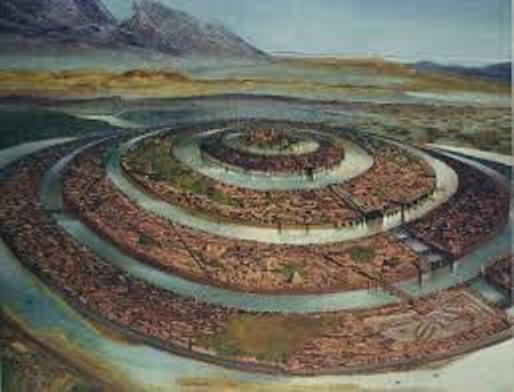
Figure 2D. How The Circular Structure Appearance During The Cusp Of The Holocene.
Notice that at least one 'Google Earth view of the Circular Structure revealed a large rectangular vessel sitting right on top of the site when the satellite took the photo. It looks like they are building or mining something right over Plato's Circular Structure?
Could this vessel be trying to recover artifacts from ancient Atlantis, or even ET alien artifacts? Plato's mention of ancient gods - Hades, Ammon, and Poseidon - are reflective of extraterrestrial aliens Mankind's Combo Ensouled Intelligent Life Forms (EILFs). For example, Poseidon would fit well with the Nommos who built Noah's Ark. Either Hades or Ammon may be Cenos Aliens who have admitted to having human interaction (see #27) in that part of the world.
This circular structure does not appear to be as deep under water as the nearby (city like?) structures found near the Guanahacabibes Peninsula. Following are some articles on these structures:
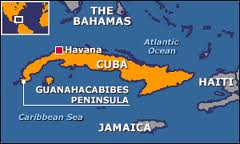
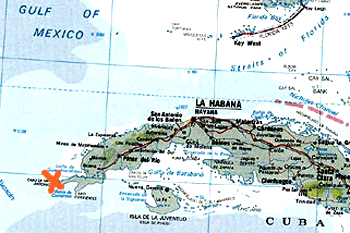
Figure 3. Cuba And The Guanahacabibes Peninsula.
A half mile down in the waters of Cabo de San Antonio off the western tip of
Cuba's Guanahacabibes peninsula (marked by red X) is a 20-kilometer square area
of clean, white sand punctuated by tall, megalithic stones or structures.
However, there are serious concerns about the depth that some of the images are found at. Sometimes shallow depths are reported, but sometimes they are 2000 feet down. The Yucatán Channel or Straits of Yucatán is a strait between Mexico and Cuba. It connects the Yucatán Basin of the Caribbean Sea with the Gulf of Mexico. It is just over 200 kilometres (120 mi) wide and nearly 2,800 metres (9,200 ft) deep at its deepest point near the coast of Cuba. So it seems reasonable that an impact event could have nudged this city 'over the edge' and it slowly sank into the Yucatán Channel.
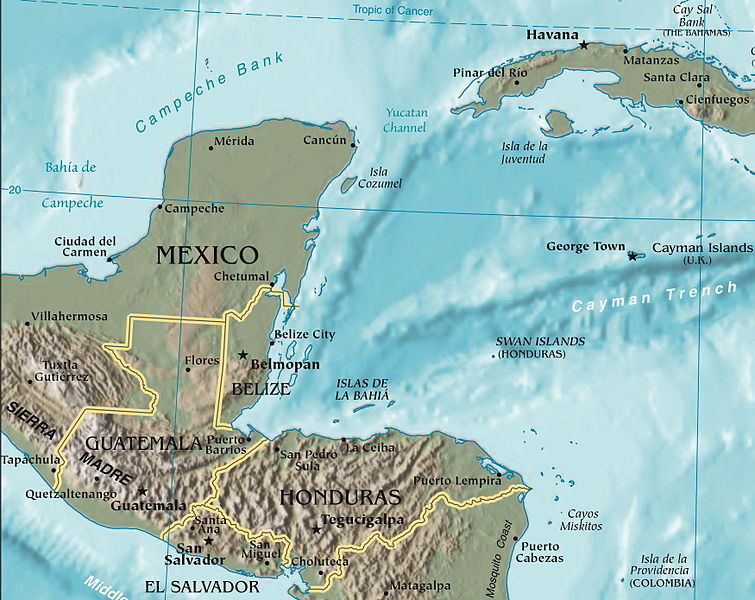
Figure 5. The Bay Of Honduras's Yucatán Channel.
Few anthropologists have addressed this issue but some interested in
Catastrophism have:
Frontiers Of Anthropology - July 24, 2011
Expressed concern:
The thing in this news item from the BBC that worries me is the figure of 650m depth. When would that ever have been at the surface? The sea levels are only supposed to have risen 140m maximum. There would have to have been some subsidence on an Atlantean scale for that to have been possible. Concern addressed:
[Actually one of the things about the entire area of the Bimini shelf that people do not realize is that there is an astonishing amount of sinking of the bedrock and deposition of the material going all the time. This is to such a degree that the "Atlantean Scale" sinking of surface level strata thousands of feet since the end of the Ice Age is not incredible, it is actually typical. Furthermore, some of the land areas of our modern continents were smashed down to a depth of a mile or two below current surface level when the glaciers were resting there-and geology recognizes very little difference in strata depressed by an overburden of water as opposed to an overburden of ice. It also seems that such depressing of the land becomes progressively greater the more pressure is put on the same area. In some mountainous regions, a single earthquake can displace sections of the earth's surface hundreds or even thousands of feet vertically--DD]
This amazing find is starting to be recognized in the mainstream anthropological field But what both the amateurs and professionals are missing is that it is not just one killer comet impact event, but rather two that they must contend with within a nominal 1000 year period. One initiated the Younger Dryas and another ended it just as the late Sir Fred Hoyle said! Furthermore, the obvious question is "are the Carolina Bays involved in this event"?
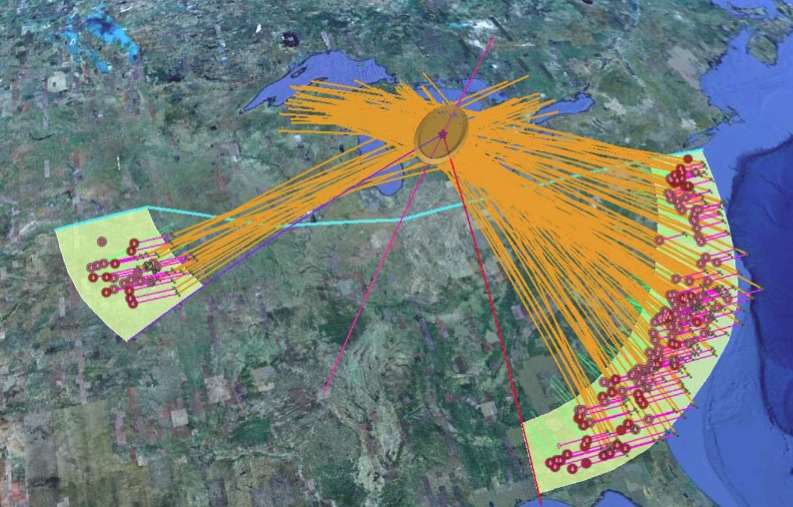
Figure 6. Vectors From The Saginaw Impact Structure To The Carolina And Nebraska Bays.
Near the eastern margin of the Caribbean plate there are recently active volcanoes in the lesser Antilles. These are associated with a convergent plate boundary and caused by subduction of the North American plate beneath the eastern edge of the Caribbean plate. The North American Plate is still moving in a southwest direction.
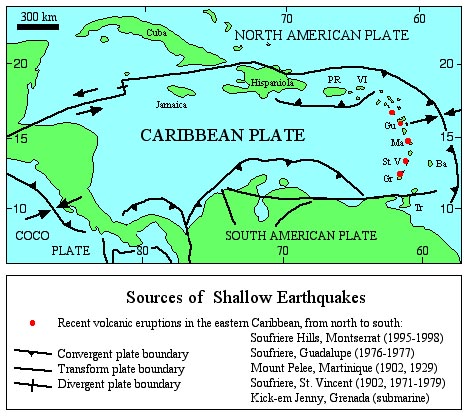
Figure 7. The Subduction Of The North American Plate Beneath The Eastern Edge Of The Caribbean Plate
The North American Plate Plate motion:
For the most part, the North American Plate moves in roughly a southwest direction away from the Mid-Atlantic Ridge. The motion of the plate cannot be driven by subduction as no part of the North American Plate is being subducted, except for a small section comprising part of the Puerto Rico Trench.An impact crater for the event ending the Younger Dryas period may have been identified:
De Montigny's craterlike depression south of Puerto Rico) offers a reasonable source for the Younger Dryas or 'Atlantis Ending' impact in the Caribbean. This substantial comet would cause a modest shift of the North American and Caribbean plates. The displacement tsunami from the impact could have had a sever effect on all the eastern islands of the Greater Antilles.
Emilio Spedicato has speculated that if Hispaniola is Atlantis, then the other islands said by Plato to have formed the Atlantean empire would constitute the principal islands of the Greater Antilles, namely Cuba and Puerto Rico
Evidence for this conclusion, he says, comes from the fact that the coasts of Atlantis were said by Plato to have been particularly precipitous, a description which applies very well to Hispaniola’s coastline.On Hispaniola a roughly rectangular-shaped plain exists in the south-eastern corner of the island. Similar to the irrigated plain described in the CRITIAS, it is shielded to the north by a range of hills. Plato asserts that the size of the Atlantean plain is 3000 stadia (552 kilometres) by 2000 stadia (368 kilometres). This, Emilio feels, comes close to matching the overall size of Hispaniola, which is orientated east-west and measures approximately 650 x 300 kilometres; he dismissed the neighbouring island of Cuba as a possible candidate since it is too large to fit the island being implied by Plato.
One possible candidate for the location of the Atlantean city would, in Emilio’s estimate, be the lowland region of Hispaniola known as the Plaine de Cul-des-Sac. It is bordered north and south by mountains. Moreover, it possesses several lakes, including Lake Enriquillo, the surface of which is currently below sea- level. There is every reason to suggest that the lake could contain coralline structures, today covered by sediment, which might well help to explain the red, white and black stone said by Plato to have been used to construct the city.
The Taino of Hispaniola referred to the island as Quisqueya, the 'mother of lands'. Did this denote, he suggested, its importance as a mythical homeland to the peoples of the Caribbean archipelago during prehistoric times?
The dimensions fit better, but the legends of the size of the various Atlantian islands may have gotten mixed up a little over time.
This weather change occurred as a result of a catastrophic comet impact at the very beginning of the Holocene and this impact destroyed the Atlantis civilization. It likely caused a major tsunami in the Caribbean area. Smaller meteorites and fireballs likely filled the skies. The time is right, the place is right, an impact crater is there and the ruins of the legendary Atlantis civilization have been found. Plato Was Right.
Some geologists are still arguing about cosmic impact events beginning and ending the Younger Dryas despite the rapid onset and termination of these events defining this period in Earth's climatological history. Others are finding impact craters relating to these events, including the one that may have slowly nudged an Atlantis era city into the Yucatán Channel.
CONCLUISONS updated 29 July 2015
The Atlantis find means more than just an interesting anthropological discovery. There are two groups of conclusions. The First Group Of Conclusions:
The astronomical resonate interval can link a past catastrophe comet impact event to determine the time and nature of an impending one. Estimating when a particular comet cluster will pass by depends or the accuracy of both the resonate interval and the time the comets passed through the inner solar system about ten thousand years ago. Effects of the next comet cluster passage is anticipated to cause different effects than the one that ended the Atlantis civilization. The Second Group Of Conclusions:
Earth may be facing an re-run of the Atlantis event with the USA serving in the role as the new Atlantis. This might be a good time to reflect on similar warnings from other notables', especially that from the late UK's Royal Astronomer, Sir Fred Hoyle:
"Together with disease, the next ice age ranks as the biggest danger to which we as individuals are exposed. The next Ice Age is not specific problem of the distant future. The causative agent, the strike of a giant meteorite, could happen at any time.The risk of the next Ice Age is not just the biggest of the risks that we run. It is a risk that would hopelessly compromise the future. Besides wiping out a considerable fraction of those now alive, it would leave a wan, grey future from which the survivors and their descendants could do nothing to escape. It would be a condition that might last 50,000 years or more, a future in which the prospects for mankind would be much less favourable than they are today. This is why our modern generation must take action to avoid catastrophe, an ultimate catastrophe besides which the problems that concern people, media and governments from day to day are quite trivial. "